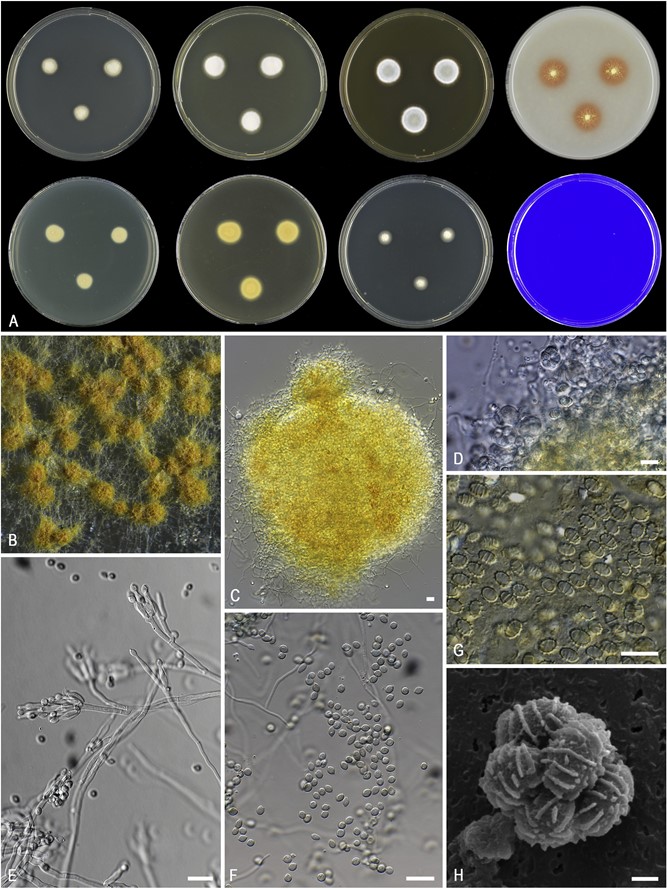Ascospirella Houbraken, Frisvad & Samson, gen. nov.
Index Fungorum number: MB832552; Facesoffungi number: FoF
Etymology: Named after the typical transverse to spiral ridges on the ascospores of the type species.
Diagnosis: Phylogenetically distinct; conidiophores typically biverticillate, but monoverticillate and irregular forms usually also present; ascomata yellow to orange; ascospores bearing 3 –5 conspicuous transverse or spiral ridges or striations (Fig. 4).
Type: Penicillium luteum Zukal
Notes: – Ascospirella is a monotypic genus in the Trichocomaceae and is phylogenetically most closely related to Thermomyces. Thermomyces contains thermophilic species (Tm. lanuginosus, Tm. dupontii), while the sole member in Ascospirella (i.e. Ascospirella lutea) is a mesophile. Ascospirella can be further distinguished from Thermomyces by the production of penicillium-like conidiophores and yellow to orange ascomata (Fig. 4). The production of ascospores with conspicuous transverse or spiral ridges or striations is a striking feature for Asco- spirella. Similarly, ornamented ascospores are also produced in Tri- chocoma paradoxa and Talaromyces udagawae. Both species also belong to the Trichocomaceae, but are phylogenetically distinct. Asco- spirella readily produces ascomata on agar media (e.g., OA, MEA), while ascoma formation by Trichocoma is only observed on the natural substrate. The ascospores of Ascospirella lutea resemble Talaromyces udagawae and these species were therefore thought to be closely related (Stolk & Samson 1972). These species differ in ascospores size and ornamentation, and ascomatal initials.

Fig. 4. Morphological characters of Ascospirella lutea. A. Colonies from left to right, after 7 d at 25 °C (top row) CYA, YES, MEA, OA; (bottom row) CYA reverse, YES reverse, DG18, CREA. B. Ascomata on OA after 8 wk at 25 °C. C. Ascoma. D. Asci and ascospores. E. Conidiophores. F. Conidia. G. Ascospores. H. SEM micrograph of ascus with ascospores. Scale bars: C–G = 10 μm; H = 1 μm.
Species
Penicillium luteum
